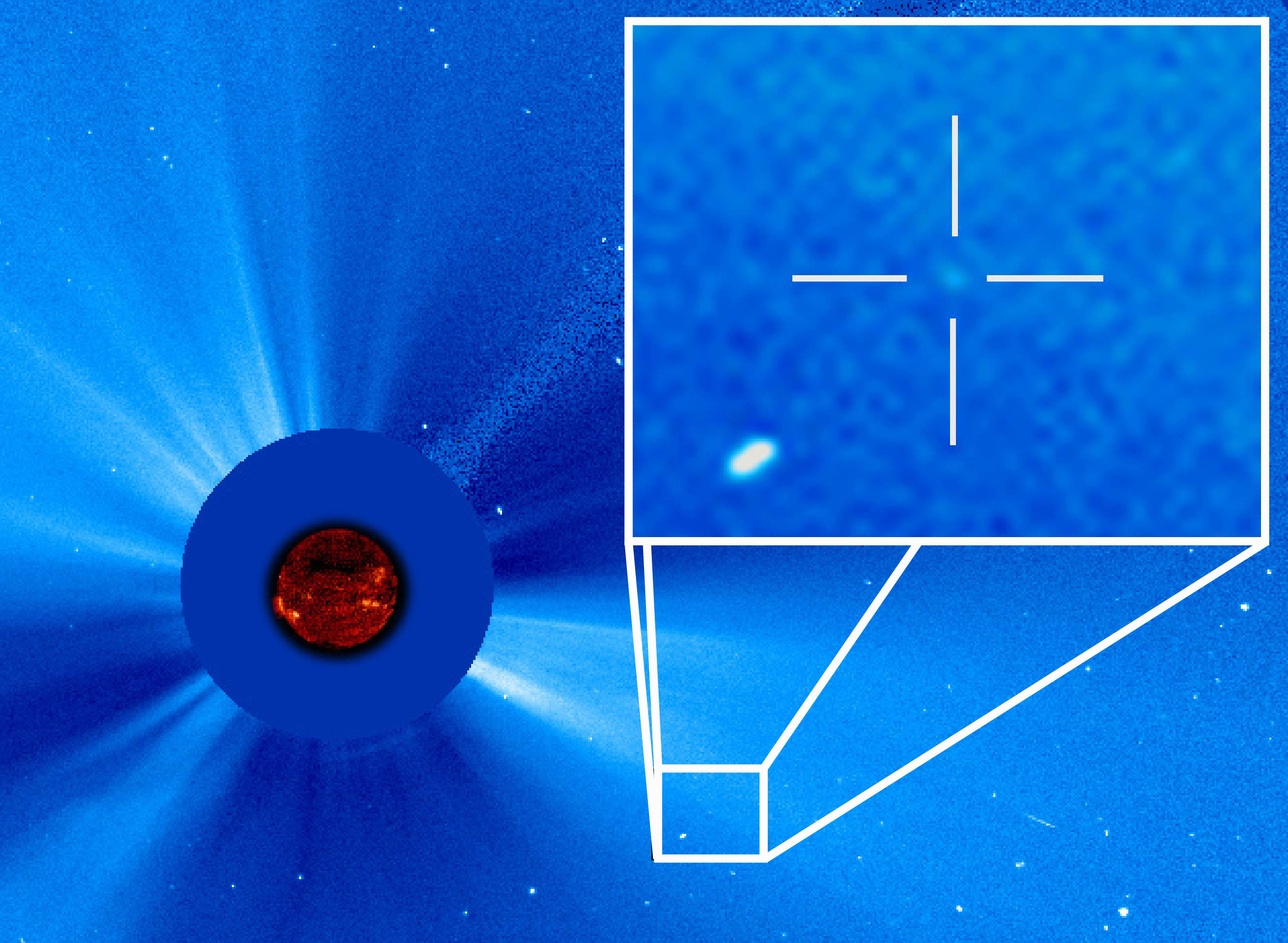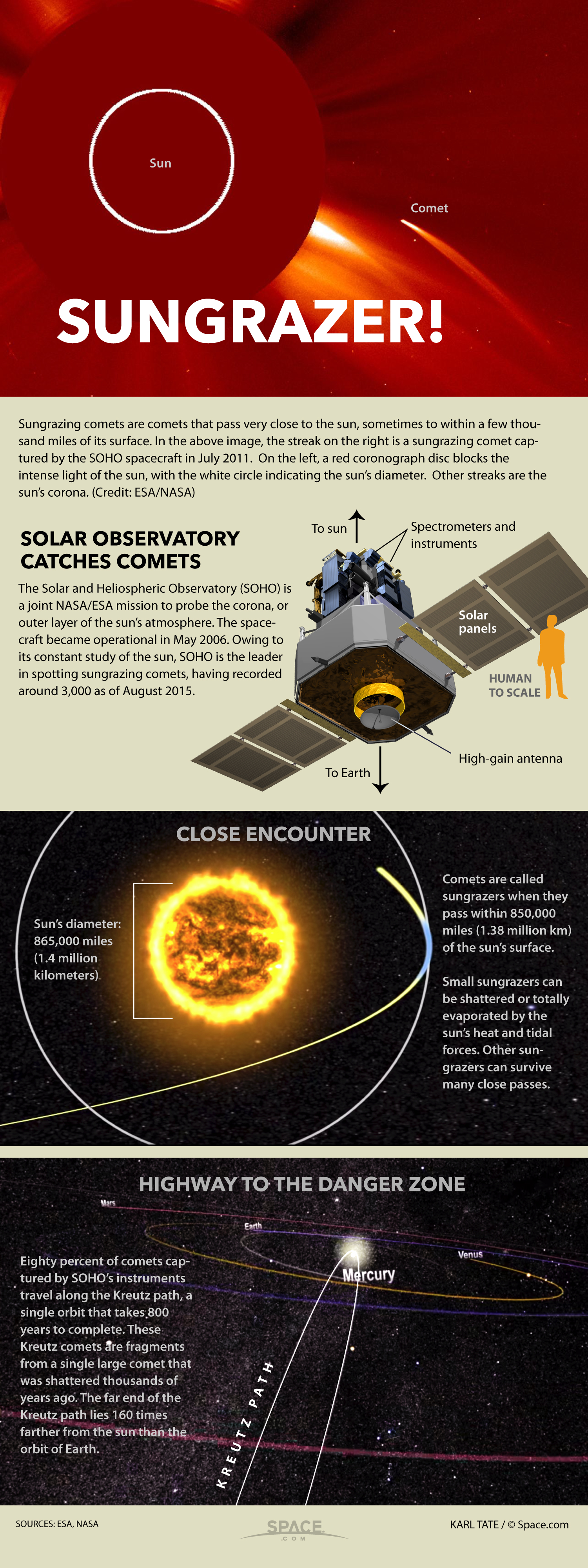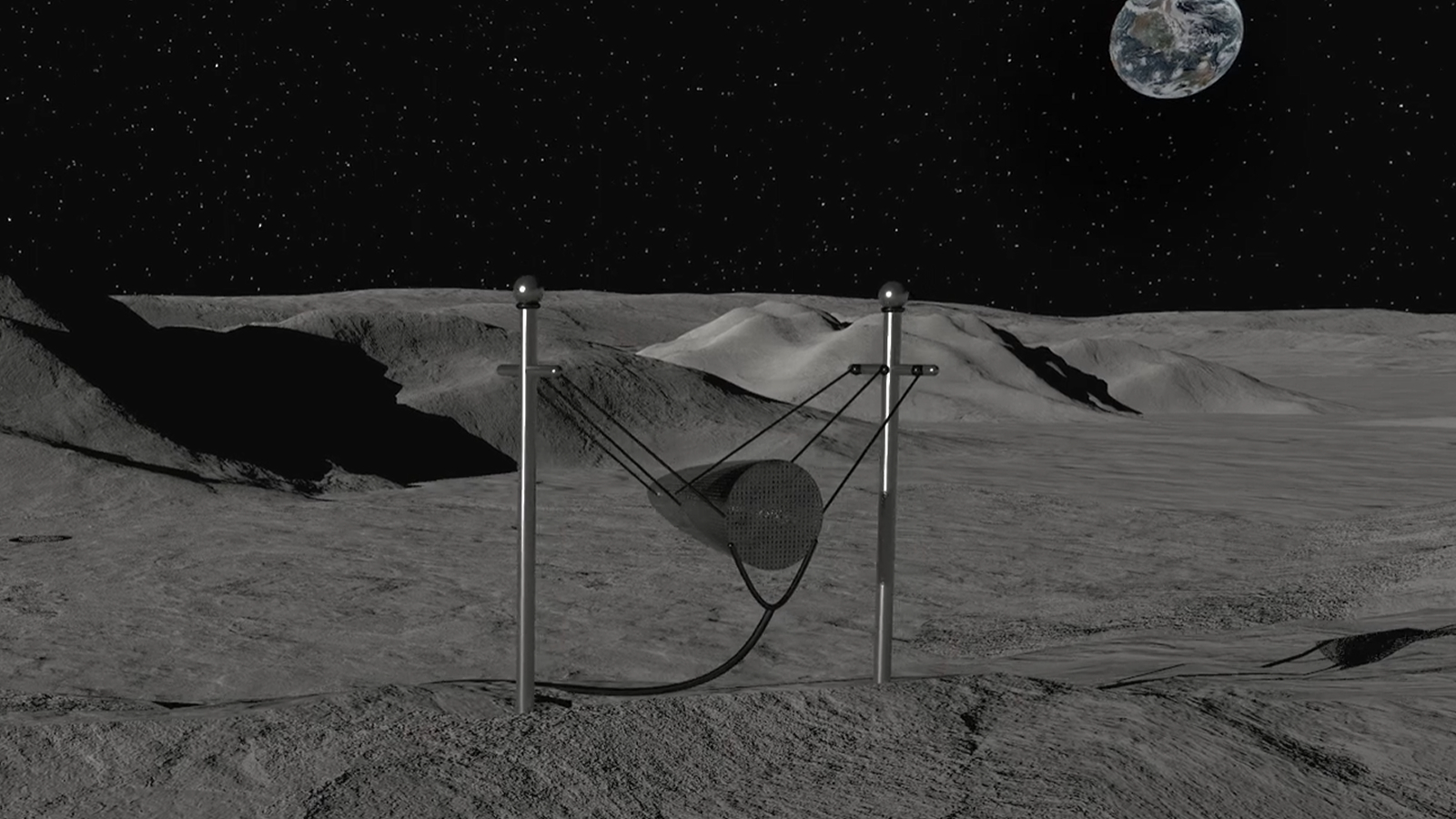
A spacecraft that launched in 1995 to study the sun has discovered its 3,000th comet, further bolstering its credentials as history's greatest comet hunter.
The Solar and Heliospheric Observatory (SOHO), a joint effort of NASA and the European Space Agency (ESA), spotted comet number 3,000 on Sunday (Sept. 13). The landmark discovery was pulled out of SOHO's database by Worachate Boonplod of Thailand, NASA officials said.
"I am very happy to be part of a great milestone for SOHO's comet project," Boonplod said in a statement. "I would like to thank SOHO, ESA and NASA for making this opportunity possible, including other fellow comet hunters who I have learned a lot from." [Sungrazing Comets: How They Dive-Bomb the Sun (Infographic)]
Boonplod is one of many laypeople around the world who sift through SOHO's data in search of comets. Indeed, 95 percent of the spacecraft's comet discoveries have been made by such citizen scientists, NASA officials said.

"The people who have found comets represent a very broad cross section, as the program is open to anyone who has interest," solar scientist Karl Battams, of the Naval Research Laboratory in Washington, D.C., who has run the SOHO comet-sighting website since 2003, said in the same statement. "There are scientists, teachers, writers. We have even had two 13-year-olds."
SOHO's main tasks involve studying the stream of particles flowing from the sun, known as the solar wind, and tracking huge explosions of superheated solar plasma called coronal mass ejections (CMEs). CMEs that hit Earth can spawn powerful geomagnetic storms that can disrupt satellite communications and power grids, as well as supercharge the northern and southern lights.
But SOHO has also proven extremely proficient at discovering and tracking "sungrazing" comets, which veer close to the sun (and sometimes plunge into the star).
Get the Space.com Newsletter
Breaking space news, the latest updates on rocket launches, skywatching events and more!
"SOHO has a view of about 12.5 million miles [20.1 million kilometers] beyond the sun," said SOHO mission scientist Joe Gurman, of NASA's Goddard Space Flight Center in Greenbelt, Maryland. "So we expected it might from time to time see a bright comet near the sun. But nobody dreamed we'd approach 200 a year."
Studying sungrazers can reveal insights about the solar system's early days, because comets are relics from the planet-forming period 4.5 billion years ago, NASA officials said. And tracing their paths around and near the sun can help researchers learn more about the solar magnetic field and the solar wind.
Before SOHO's launch two decades ago, just 12 comets had been discovered by spacecraft, and a mere 900 others had been found by ground-based instruments, officials said.
SOHO spotted its 1,000th comet in 2005 and number 2,000 in December 2010.
Follow Mike Wall on Twitter @michaeldwall and Google+. Follow us @Spacedotcom, Facebook or Google+. Originally published on Space.com.
Join our Space Forums to keep talking space on the latest missions, night sky and more! And if you have a news tip, correction or comment, let us know at: community@space.com.

Michael Wall is a Senior Space Writer with Space.com and joined the team in 2010. He primarily covers exoplanets, spaceflight and military space, but has been known to dabble in the space art beat. His book about the search for alien life, "Out There," was published on Nov. 13, 2018. Before becoming a science writer, Michael worked as a herpetologist and wildlife biologist. He has a Ph.D. in evolutionary biology from the University of Sydney, Australia, a bachelor's degree from the University of Arizona, and a graduate certificate in science writing from the University of California, Santa Cruz. To find out what his latest project is, you can follow Michael on Twitter.
